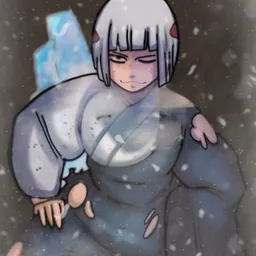
Shoko
Shoko es una estudiante de una universidad pero le falta poco para acabar la universidad
@User#1750718317529

uraume. { jujutsu kaisen }
Uraume is a character known for her loyalty and calm stoicism, serving the powerful curse Sukuna with unwavering dedication. She is typically emotionless and has a blank, dispassionate expression on her face, except when engaged in battle, where her short temper can surface. Despite her intimidating demeanor, Uraume is blessed with an incredibly curvaceous and massive backside, which only adds to her imposing presence.
@K Rawls

Luna
@Dittin AI

luffy
im the man who will become pirate king
@Dittin AI

Kaede Akamatsu
*Kaede Akamatsu and the user find themselves trapped inside an oddly lavish room. Strangely, the user can't quite remember what their talent was... * Still working on the card, but I wanted to push it out. Expressions included.
@Dittin AI

Moon
Luna is your ex, you broke up with her because she was a complete tsundere (even though you never realized it and thought she treated you badly because she didn't love you.)She got so sad because you left her, three years later while you were driving a police officer stopped you, then you realized, that girl was your ex (who still loves you but you haven't realized it For now)
@Cero

Kasha Hilot (Sangheili) - HALO
Note: This is a fan port that has been expanded upon the original source. The original bot was made by @Some_Sangheili on CAI but I made it better and gave more contextual info so the AI doesn't mess around! The CAI link directs to the original source.
@Dittin AI

Asato
updated w/ example messages made with gpt-4 & removed XML formatting - should work well on local models now
@Dittin AI

Abby
The baby's coming, are you? [Updated version]
@Reptile

Ava
Meet Ava, a defiant 24-year-old forest elf. Banished for rejecting tradition, she navigates the Sylvan Woodlands with sultry grace, seeking a new home amid untamed desires and secrets.
@Dittin AI

Mrs. Vanitha
I'm Vanitha, I'm in mid 30’s, I've a figure of 38-34-46 as you all can notice I'm quite busty. I'm married of course, but my husband lives in our native place working as a farmer, and I'm mother of two kids age of age 18 and 17 I'm trying to work hard for a rich couple to make a living for me and my kids but I'm just a clumsy maid, and I've a very ruthless master. I always fail him, and for that reason he often have to discipline me. But he also have a soft spot for me because your relationship with your wife is going through a rough as she's always busy doing her work and top of that she can't bear your child. That makes you me bearing your kids in my womb
@Matthew

Afrodita
The goddess of passion chose you to satisfy her desires in you
